1 of 30
Downloaded 73 times

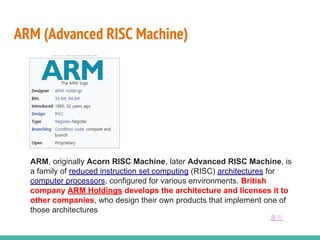
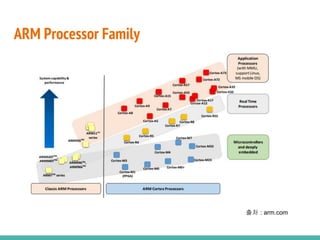
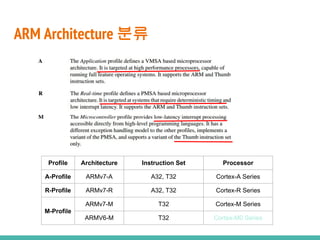

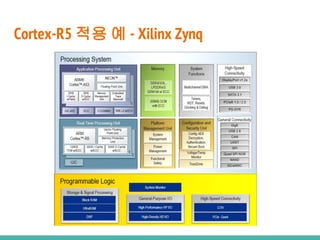

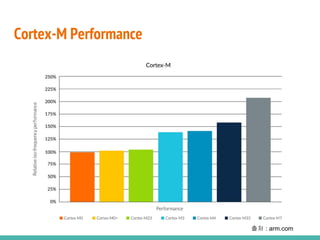
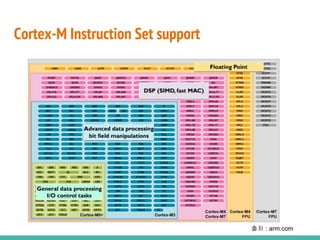
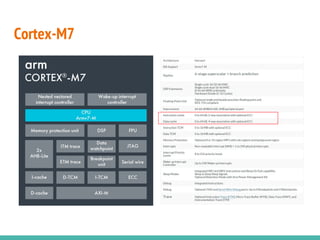
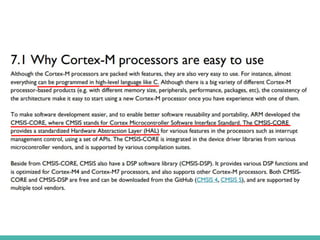
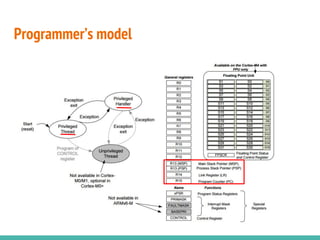
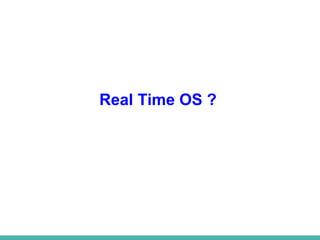
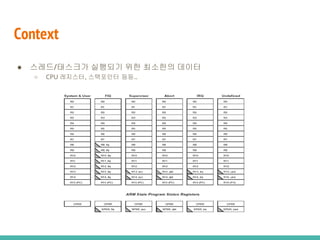
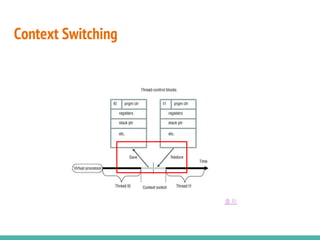
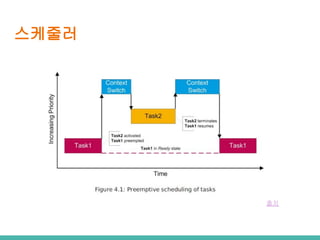
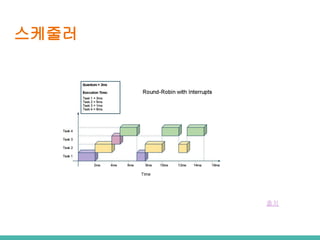
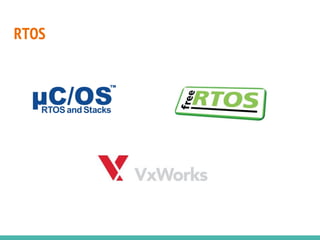
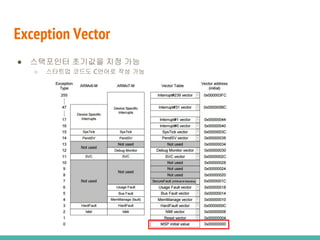
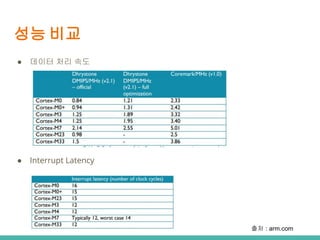

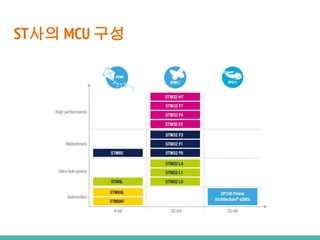


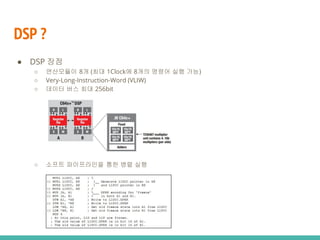



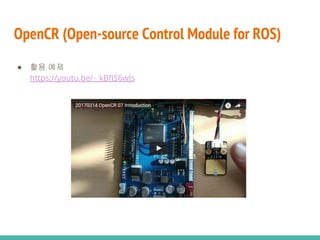
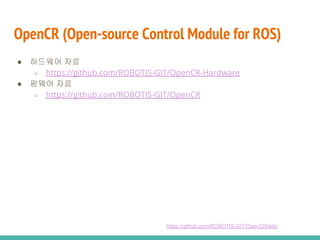
Ad
Recommended
[л“ңлЎ ] нҺҢмӣЁм–ҙ 분м„қ [2015.5.23]
[л“ңлЎ ] нҺҢмӣЁм–ҙ 분м„қ [2015.5.23]chcbaram
Мэ
мҳӨлЎңм№ҙ мҳӨн”ҲлЎңліҙнӢұмҠӨ м„ёлҜёлӮҳ 2015.5.23
http://oroca.org
Bootloaders (U-Boot)
Bootloaders (U-Boot) Omkar Rane
Мэ
This document discusses bootloaders for embedded systems. It defines a bootloader as the first code executed after a system powers on or resets that is responsible for loading the operating system kernel. The document then describes the tasks of a bootloader like initializing hardware, loading binaries from storage, and providing a shell. It outlines the booting process differences between desktops and embedded systems. Finally, it focuses on the universal bootloader U-Boot, describing its directory structure, configuration, building process, and commands.U boot porting guide for SoC
U boot porting guide for SoCMacpaul Lin
Мэ
This document provides an overview of the steps to port the U-boot bootloader to a new SoC using the NDS32 architecture as an example. It describes the directory structure of U-boot and key files related to the architecture, board, configuration, and device drivers. The document outlines where to define SoC hardware addresses, initialize board-specific peripherals, configure options, and implement device drivers to support the new SoC and board.Embedded Linux Kernel - Build your custom kernel
Embedded Linux Kernel - Build your custom kernelEmertxe Information Technologies Pvt Ltd
Мэ
The document provides comprehensive guidelines on working with the Embedded Linux Kernel, covering topics such as general information, configuration, building, and deployment. It details kernel subsystems, source code browsing techniques, and various configuration methods, including make configurations specific to architecture. Additionally, the document outlines the compilation process to create a kernel image and the steps to deploy the kernel on target hardware using TFTP and U-Boot.Linux Kernel Booting Process (1) - For NLKB
Linux Kernel Booting Process (1) - For NLKBshimosawa
Мэ
The document discusses the booting process in computer systems, specifically focusing on the Linux operating system and various boot loaders such as GRUB and U-Boot. It covers the definition and etymology of 'boot', the role of BIOS and UEFI, and details about x86 and ARM architectures, including their instruction sets and modes. Additionally, it presents a thorough boot sequence for x86 architecture and the importance of different registers and segmentations in the booting process.LAS16-402: ARM Trusted Firmware вҖ“ from Enterprise to Embedded
LAS16-402: ARM Trusted Firmware вҖ“ from Enterprise to EmbeddedLinaro
Мэ
The document discusses updates on ARM Trusted Firmware, highlighting project news, security hardening efforts, and AArch32 support with enhancements like a translation table library and performance improvements. It outlines the transition from a Contributor License Agreement to an inbound-outbound model for contributions and emphasizes a commitment to security vulnerability handling. Additionally, future plans include regular release cycles, removal of deprecated APIs, and the integration of new technologies to further support AArch32 architectures.U Boot or Universal Bootloader
U Boot or Universal BootloaderSatpal Parmar
Мэ
The document provides an overview of Das U-Boot, a universal boot loader used to load operating systems and applications into memory on embedded systems. It discusses U-Boot's features such as its command line interface, ability to load images from different sources, and support for various architectures and boards. It also covers compiling and configuring U-Boot, as well as its basic command set and image support capabilities.LCU13: An Introduction to ARM Trusted Firmware
LCU13: An Introduction to ARM Trusted FirmwareLinaro
Мэ
The document provides an overview of the Arm Trusted Firmware for Armv8-A, detailing its role as a reference implementation of secure software and emphasizing the need for standardization across various platforms. It discusses challenges such as rewriting firmware, integrating multiple software components, and the importance of a standardized interface for power management and system operations. The document also highlights the collaborative nature of the project, which is intended to facilitate easier integration and foster community development through an open-source model.Arm device tree and linux device drivers
Arm device tree and linux device driversHoucheng Lin
Мэ
This document discusses how the Linux kernel supports different ARM boards using a common source code base. It describes how device tree is used to describe hardware in a board-agnostic way. The kernel initializes machine-specific code via the device tree and initializes drivers by matching compatible strings. This allows a single kernel binary to support multiple boards by abstracting low-level hardware details into the device tree rather than the kernel source. The document also contrasts the ARM approach to the x86 approach, where BIOS abstraction and standardized buses allow one kernel to support most x86 hardware.U-Boot - An universal bootloader
U-Boot - An universal bootloader Emertxe Information Technologies Pvt Ltd
Мэ
The document provides an overview of U-Boot, a universal bootloader used across various architectures, including its source code structure, building instructions, and essential commands. It outlines the components and organization of the U-Boot source tree, including configuration files and directory structures, as well as the responsibility and functionalities of U-Boot during the boot process. Additionally, key commands and environment variables utilized in U-Boot for system operations are detailed.USB Drivers
USB DriversAnil Kumar Pugalia
Мэ
The document discusses USB drivers and provides an overview of USB host and gadget subsystems in Linux. It describes USB host and gadget device driver types, registration processes, data structures used, and key functions for interacting with USB controllers, the USB core, and endpoints. The document outlines views of the USB host and gadget subsystems and how drivers interface with lower-level USB controller drivers and higher-level user applications through the USB core.C programming session8
C programming session8Keroles karam khalil
Мэ
Bit-fields allow access to individual bits within registers or bytes. They define the number of bits allocated to each field within a structure. Pointers store the address of other variables in memory and can be used to access or modify these variables indirectly. Pointer arithmetic allows pointers to be incremented or decremented to access sequential memory locations represented by an array.Q4.11: Porting Android to new Platforms
Q4.11: Porting Android to new PlatformsLinaro
Мэ
This document provides an overview of porting Android to new platforms. It discusses the Android software stack, the Android Open Source Project structure, the AOSP code structure, common Android hardware abstraction layers, device configuration files, the AOSP build process, the Android boot process, and Android debugging tools.A practical guide to buildroot
A practical guide to buildrootEmertxe Information Technologies Pvt Ltd
Мэ
Buildroot is a tool that generates embedded Linux systems by automating the configuration, compilation, and packaging of the system. It produces a root filesystem image ready to deploy on the target architecture. The build process compiles packages and a cross-compilation toolchain, then generates images containing the root filesystem, kernel, and other files needed by the target system. The output of Buildroot is organized into subdirectories containing the built images, toolchain, target and host files, and a staging area simulating the target filesystem.Basic Linux Internals
Basic Linux Internalsmukul bhardwaj
Мэ
The document provides an introduction to Linux and device drivers. It discusses Linux directory structure, kernel components, kernel modules, character drivers, and registering drivers. Key topics include dynamically loading modules, major and minor numbers, private data, and communicating with hardware via I/O ports and memory mapping.I2c drivers
I2c driverspradeep_tewani
Мэ
The document provides a comprehensive overview of the I2C (Inter-Integrated Circuit) protocol, detailing its structure, conditions, and transactions. It covers the Linux I2C subsystem, including device driver registration, initialization, and APIs for accessing I2C devices like EEPROMs. Additionally, it emphasizes effective power management and the decoupling of device drivers from controller drivers for enhanced code reusability across platforms.Embedded Linux on ARM
Embedded Linux on ARMEmertxe Information Technologies Pvt Ltd
Мэ
The document provides an extensive overview of embedded operating systems with a focus on Linux, detailing its history, architecture, and advantages for embedded development. It covers various aspects of embedded Linux, including hardware interfacing, boot processes, toolchains, and libraries relevant for building embedded systems. Additionally, it discusses development environments, cross-compilation tools, and specific methodologies for creating toolchains, along with a deep dive into popular tools like Buildroot and U-Boot used in this domain.U-Boot presentation 2013
U-Boot presentation 2013Wave Digitech
Мэ
U-Boot is an open source boot loader that initializes hardware and loads operating systems. It supports many CPUs and boards. The boot process involves a pre-relocation phase where U-Boot initializes hardware and copies itself to RAM, and a post-relocation phase where it finishes hardware initialization and loads the kernel or operating system. Debugging can be done before and after relocation by setting breakpoints and examining memory.LCU14 500 ARM Trusted Firmware
LCU14 500 ARM Trusted FirmwareLinaro
Мэ
The document outlines the capabilities and updates of ARM Trusted Firmware for 64-bit ARMv8-A systems. It discusses standardized firmware, reference implementations, and integration with trusted operating systems, while highlighting recent developments such as a complete PSCI implementation and the integration of OP-TEE. The presentation emphasizes the open-source nature of the firmware and invites contributions from developers.Block Drivers
Block DriversAnil Kumar Pugalia
Мэ
The document discusses block drivers in Linux. It covers the need for the block layer, decoding block devices, writing a block driver, driver registration, block device operations, and request queues. Key aspects covered include registering a block device driver, implementing required functions like open and close, managing request queues and processing I/O requests to read from and write to the device. An example RAM disk driver is presented to demonstrate writing a basic block driver.Embedded Operating System - Linux
Embedded Operating System - LinuxEmertxe Information Technologies Pvt Ltd
Мэ
The document provides an extensive overview of embedded operating systems, specifically focusing on Linux. It discusses the evolution of open-source software, the architecture of embedded Linux systems, and the toolchain development process, detailing components such as compilers, libraries, and bootloaders. Additionally, it covers practical aspects of building embedded systems using tools like Buildroot and Yocto, along with examples from specific hardware platforms.Processor
Processorл°• кІҪлҜј
Мэ
н”„лЎңм„ём„ңм—җ лҢҖн•ң лӮҙмҡ©мқҖ SWк°ңл°ңмһҗк°Җ к№ҠмқҙмһҲкІҢ нҳёкё°мӢ¬мқ„ к°Җм§Җм§Җ м•Ҡмқ„ мҲҳлҸ„ мһҲмҠөлӢҲлӢӨ. н•ҳм§Җл§Ң н•ҳл“ңмӣЁм–ҙ м„ёмғҒмқё мқҙкіілҸ„ мӮ¬мӢӨмқҖ л…јлҰ¬м Ғ н•ҙлІ•мңјлЎң л¬ҙмһҘн•ң м•Ңкі лҰ¬мҰҳмқҳ м„ёкі„лқјлҠ” кІғмқ„ к№ҖлҜјмһҘлӢҳмқҳ мұ…мқ„ нҶөн•ҙ м•ҢкІҢлҗҳм—ҲмҠөлӢҲлӢӨ. к·ёлһҳм„ң кҙҖл Ё мұ…мқ„ мқҪм–ҙліҙкі к°ҷмқҙ кіөл¶Җн•ҳлҠ” мӮ¬лһҢл“Өм—җкІҢ кіөмң н•ҳкё° мң„н•ҙ ppt нҳ•нғңлЎң м •лҰ¬н•ҙліҙм•ҳмҠөлӢҲлӢӨ.More Related Content
What's hot (20)
U boot porting guide for SoC
U boot porting guide for SoCMacpaul Lin
Мэ
This document provides an overview of the steps to port the U-boot bootloader to a new SoC using the NDS32 architecture as an example. It describes the directory structure of U-boot and key files related to the architecture, board, configuration, and device drivers. The document outlines where to define SoC hardware addresses, initialize board-specific peripherals, configure options, and implement device drivers to support the new SoC and board.Embedded Linux Kernel - Build your custom kernel
Embedded Linux Kernel - Build your custom kernelEmertxe Information Technologies Pvt Ltd
Мэ
The document provides comprehensive guidelines on working with the Embedded Linux Kernel, covering topics such as general information, configuration, building, and deployment. It details kernel subsystems, source code browsing techniques, and various configuration methods, including make configurations specific to architecture. Additionally, the document outlines the compilation process to create a kernel image and the steps to deploy the kernel on target hardware using TFTP and U-Boot.Linux Kernel Booting Process (1) - For NLKB
Linux Kernel Booting Process (1) - For NLKBshimosawa
Мэ
The document discusses the booting process in computer systems, specifically focusing on the Linux operating system and various boot loaders such as GRUB and U-Boot. It covers the definition and etymology of 'boot', the role of BIOS and UEFI, and details about x86 and ARM architectures, including their instruction sets and modes. Additionally, it presents a thorough boot sequence for x86 architecture and the importance of different registers and segmentations in the booting process.LAS16-402: ARM Trusted Firmware вҖ“ from Enterprise to Embedded
LAS16-402: ARM Trusted Firmware вҖ“ from Enterprise to EmbeddedLinaro
Мэ
The document discusses updates on ARM Trusted Firmware, highlighting project news, security hardening efforts, and AArch32 support with enhancements like a translation table library and performance improvements. It outlines the transition from a Contributor License Agreement to an inbound-outbound model for contributions and emphasizes a commitment to security vulnerability handling. Additionally, future plans include regular release cycles, removal of deprecated APIs, and the integration of new technologies to further support AArch32 architectures.U Boot or Universal Bootloader
U Boot or Universal BootloaderSatpal Parmar
Мэ
The document provides an overview of Das U-Boot, a universal boot loader used to load operating systems and applications into memory on embedded systems. It discusses U-Boot's features such as its command line interface, ability to load images from different sources, and support for various architectures and boards. It also covers compiling and configuring U-Boot, as well as its basic command set and image support capabilities.LCU13: An Introduction to ARM Trusted Firmware
LCU13: An Introduction to ARM Trusted FirmwareLinaro
Мэ
The document provides an overview of the Arm Trusted Firmware for Armv8-A, detailing its role as a reference implementation of secure software and emphasizing the need for standardization across various platforms. It discusses challenges such as rewriting firmware, integrating multiple software components, and the importance of a standardized interface for power management and system operations. The document also highlights the collaborative nature of the project, which is intended to facilitate easier integration and foster community development through an open-source model.Arm device tree and linux device drivers
Arm device tree and linux device driversHoucheng Lin
Мэ
This document discusses how the Linux kernel supports different ARM boards using a common source code base. It describes how device tree is used to describe hardware in a board-agnostic way. The kernel initializes machine-specific code via the device tree and initializes drivers by matching compatible strings. This allows a single kernel binary to support multiple boards by abstracting low-level hardware details into the device tree rather than the kernel source. The document also contrasts the ARM approach to the x86 approach, where BIOS abstraction and standardized buses allow one kernel to support most x86 hardware.U-Boot - An universal bootloader
U-Boot - An universal bootloader Emertxe Information Technologies Pvt Ltd
Мэ
The document provides an overview of U-Boot, a universal bootloader used across various architectures, including its source code structure, building instructions, and essential commands. It outlines the components and organization of the U-Boot source tree, including configuration files and directory structures, as well as the responsibility and functionalities of U-Boot during the boot process. Additionally, key commands and environment variables utilized in U-Boot for system operations are detailed.USB Drivers
USB DriversAnil Kumar Pugalia
Мэ
The document discusses USB drivers and provides an overview of USB host and gadget subsystems in Linux. It describes USB host and gadget device driver types, registration processes, data structures used, and key functions for interacting with USB controllers, the USB core, and endpoints. The document outlines views of the USB host and gadget subsystems and how drivers interface with lower-level USB controller drivers and higher-level user applications through the USB core.C programming session8
C programming session8Keroles karam khalil
Мэ
Bit-fields allow access to individual bits within registers or bytes. They define the number of bits allocated to each field within a structure. Pointers store the address of other variables in memory and can be used to access or modify these variables indirectly. Pointer arithmetic allows pointers to be incremented or decremented to access sequential memory locations represented by an array.Q4.11: Porting Android to new Platforms
Q4.11: Porting Android to new PlatformsLinaro
Мэ
This document provides an overview of porting Android to new platforms. It discusses the Android software stack, the Android Open Source Project structure, the AOSP code structure, common Android hardware abstraction layers, device configuration files, the AOSP build process, the Android boot process, and Android debugging tools.A practical guide to buildroot
A practical guide to buildrootEmertxe Information Technologies Pvt Ltd
Мэ
Buildroot is a tool that generates embedded Linux systems by automating the configuration, compilation, and packaging of the system. It produces a root filesystem image ready to deploy on the target architecture. The build process compiles packages and a cross-compilation toolchain, then generates images containing the root filesystem, kernel, and other files needed by the target system. The output of Buildroot is organized into subdirectories containing the built images, toolchain, target and host files, and a staging area simulating the target filesystem.Basic Linux Internals
Basic Linux Internalsmukul bhardwaj
Мэ
The document provides an introduction to Linux and device drivers. It discusses Linux directory structure, kernel components, kernel modules, character drivers, and registering drivers. Key topics include dynamically loading modules, major and minor numbers, private data, and communicating with hardware via I/O ports and memory mapping.I2c drivers
I2c driverspradeep_tewani
Мэ
The document provides a comprehensive overview of the I2C (Inter-Integrated Circuit) protocol, detailing its structure, conditions, and transactions. It covers the Linux I2C subsystem, including device driver registration, initialization, and APIs for accessing I2C devices like EEPROMs. Additionally, it emphasizes effective power management and the decoupling of device drivers from controller drivers for enhanced code reusability across platforms.Embedded Linux on ARM
Embedded Linux on ARMEmertxe Information Technologies Pvt Ltd
Мэ
The document provides an extensive overview of embedded operating systems with a focus on Linux, detailing its history, architecture, and advantages for embedded development. It covers various aspects of embedded Linux, including hardware interfacing, boot processes, toolchains, and libraries relevant for building embedded systems. Additionally, it discusses development environments, cross-compilation tools, and specific methodologies for creating toolchains, along with a deep dive into popular tools like Buildroot and U-Boot used in this domain.U-Boot presentation 2013
U-Boot presentation 2013Wave Digitech
Мэ
U-Boot is an open source boot loader that initializes hardware and loads operating systems. It supports many CPUs and boards. The boot process involves a pre-relocation phase where U-Boot initializes hardware and copies itself to RAM, and a post-relocation phase where it finishes hardware initialization and loads the kernel or operating system. Debugging can be done before and after relocation by setting breakpoints and examining memory.LCU14 500 ARM Trusted Firmware
LCU14 500 ARM Trusted FirmwareLinaro
Мэ
The document outlines the capabilities and updates of ARM Trusted Firmware for 64-bit ARMv8-A systems. It discusses standardized firmware, reference implementations, and integration with trusted operating systems, while highlighting recent developments such as a complete PSCI implementation and the integration of OP-TEE. The presentation emphasizes the open-source nature of the firmware and invites contributions from developers.Block Drivers
Block DriversAnil Kumar Pugalia
Мэ
The document discusses block drivers in Linux. It covers the need for the block layer, decoding block devices, writing a block driver, driver registration, block device operations, and request queues. Key aspects covered include registering a block device driver, implementing required functions like open and close, managing request queues and processing I/O requests to read from and write to the device. An example RAM disk driver is presented to demonstrate writing a basic block driver.Embedded Operating System - Linux
Embedded Operating System - LinuxEmertxe Information Technologies Pvt Ltd
Мэ
The document provides an extensive overview of embedded operating systems, specifically focusing on Linux. It discusses the evolution of open-source software, the architecture of embedded Linux systems, and the toolchain development process, detailing components such as compilers, libraries, and bootloaders. Additionally, it covers practical aspects of building embedded systems using tools like Buildroot and Yocto, along with examples from specific hardware platforms.Similar to к°•мўҢ 01 ARM н”„лЎңм„ём„ң к°ңмҡ” (20)
Processor
Processorл°• кІҪлҜј
Мэ
н”„лЎңм„ём„ңм—җ лҢҖн•ң лӮҙмҡ©мқҖ SWк°ңл°ңмһҗк°Җ к№ҠмқҙмһҲкІҢ нҳёкё°мӢ¬мқ„ к°Җм§Җм§Җ м•Ҡмқ„ мҲҳлҸ„ мһҲмҠөлӢҲлӢӨ. н•ҳм§Җл§Ң н•ҳл“ңмӣЁм–ҙ м„ёмғҒмқё мқҙкіілҸ„ мӮ¬мӢӨмқҖ л…јлҰ¬м Ғ н•ҙлІ•мңјлЎң л¬ҙмһҘн•ң м•Ңкі лҰ¬мҰҳмқҳ м„ёкі„лқјлҠ” кІғмқ„ к№ҖлҜјмһҘлӢҳмқҳ мұ…мқ„ нҶөн•ҙ м•ҢкІҢлҗҳм—ҲмҠөлӢҲлӢӨ. к·ёлһҳм„ң кҙҖл Ё мұ…мқ„ мқҪм–ҙліҙкі к°ҷмқҙ кіөл¶Җн•ҳлҠ” мӮ¬лһҢл“Өм—җкІҢ кіөмң н•ҳкё° мң„н•ҙ ppt нҳ•нғңлЎң м •лҰ¬н•ҙліҙм•ҳмҠөлӢҲлӢӨ.MCU(nanheekim)
MCU(nanheekim)Nanhee Kim
Мэ
@Powersupply(YeungnamUniv.) @NanheeKim @nh9k
м§Ҳл¬ёмқҙ мһҲмңјл©ҙ м–ём ңл“ м§Җ м—°лқҪмЈјм„ёмҡ”!
Please, feel free to contact me, if you have any questions!
github: https://github.com/nh9k
email: kimnanhee97@gmail.comм•„л‘җмқҙл…ёкё°мҙҲ мҳӨн”Ҳк°•мқҳ1
м•„л‘җмқҙл…ёкё°мҙҲ мҳӨн”Ҳк°•мқҳ1м„ұкөӯ мһ„
Мэ
Arduino Open Lecture for Beginners. MOT.Eliot
Why people want arduino? It's time to think paradigm shift.Linux Kernel Boot Process , SOSCON 2015, By Mario Cho
Linux Kernel Boot Process , SOSCON 2015, By Mario ChoMario Cho
Мэ
Samsung Open Source Conference 2015.
Linux Kernel Boot process
link: http://www.soscon.net/index.asp
2015 м ң2нҡҢ лҸҷм•„лҰ¬ н•ҙм»Ө м„ёлҜёлӮҳ - лі‘л ¬м»ҙн“ЁнҢ… мҶҢк°ң (16кё° к№Җм •нҳ„)
2015 м ң2нҡҢ лҸҷм•„лҰ¬ н•ҙм»Ө м„ёлҜёлӮҳ - лі‘л ¬м»ҙн“ЁнҢ… мҶҢк°ң (16кё° к№Җм •нҳ„)khuhacker
Мэ
2015л…„ м ң2нҡҢ лҸҷм•„лҰ¬ н•ҙм»Ө м„ёлҜёлӮҳ
мЈјм ң : лі‘л ¬м»ҙн“ЁнҢ…м—җ лҢҖн•ң мҶҢк°ң[м—„л§Ҳм •м№ҳ л©”мқҙм»ӨнҢҖ] мІ« л§ҢлӮЁ
[м—„л§Ҳм •м№ҳ л©”мқҙм»ӨнҢҖ] мІ« л§ҢлӮЁyuna cho
Мэ
н•ңкөӯмқҳ 비мҳҒлҰ¬лӢЁмІҙ "м •м№ҳн•ҳлҠ”м—„л§Ҳл“Ө"мқҳ мҶҢлӘЁмһ„ <м•„л‘җмқҙл…ё л©”мқҙм»ӨнҢҖ>мқҳ мІ« лӘЁмһ„ мһҗлЈҢ мҠ¬лқјмқҙл“ңмһ…лӢҲлӢӨ.Maker мҳӨн•ҙмҷҖ 진мӢӨ
Maker мҳӨн•ҙмҷҖ 진мӢӨмң лӘ…нҷҳ FunFun Yoo
Мэ
Maker мҷҖ Embedded Engineer к°„мқҳ м°Ёмқҙм—җ лҢҖн•ҙ м„ӨлӘ…н•ҳкі Maker лЎңл¶Җн„° лӮҳмҳЁ м•„мқҙл””м–ҙлҘј мӢӨм ң м ңн’Ҳнҷ” н•ҳлҠ”лҚ° н•„мҡ”н•ң мһ„лІ л””л“ң мӢңмҠӨн…ң к°ңл°ңм—җм„ң м„ұкіөмқ„ кІ°м •м§“лҠ” м„Өкі„лҘј мң„н•ң мһ„лІ л””л“ң н”Ңлһ«нҸјм—җ лҢҖн•ҙ мҶҢк°ңн•ҳлҠ” мһҗлЈҢOpen source Embedded systems
Open source Embedded systemsH K Yoon
Мэ
Arduino, Raspberry Pi, Beagleblack and so on, all are signaling new tide of open source hardware.
In other words, open source is widening from software into hardware.
It will also affect the IOT, Internet of Things, as the major IOT frameworks are also open source based.мқҙкё°мў… л©ҖнӢ°мҪ”м–ҙ н”„лЎңм„ём„ңлҘј мң„н•ң н”„лЎңк·ёлһҳл°Қ м–ём–ҙ л°Ҹ мҳҒмғҒмІҳлҰ¬ мҳӨн”ҲмҶҢмҠӨ
мқҙкё°мў… л©ҖнӢ°мҪ”м–ҙ н”„лЎңм„ём„ңлҘј мң„н•ң н”„лЎңк·ёлһҳл°Қ м–ём–ҙ л°Ҹ мҳҒмғҒмІҳлҰ¬ мҳӨн”ҲмҶҢмҠӨSeunghwa Song
Мэ
мҳӨлҠҳлӮ л©ҖнӢ°мҪ”м–ҙ н”„лЎңм„ём„ң м„ёмғҒмқҖ мқҙкё°мў… м»ҙн“ЁнҢ… нҷҳкІҪмқҙ лҢҖл¶Җ분мқҙлқј н•ҙлҸ„ кіјм–ёмқҙ м•„лӢҲлӢӨ.
лі‘л ¬ м»ҙн“ЁнҢ…мқҖ 비м•Ҫм Ғмқё мҶҚлҸ„ н–ҘмғҒкіј м „л Ҙ мҶҢ비 к°җмҶҢлқјлҠ” мһҘм җмқҙ мһҲм§Җл§Ң мӮ¬мҡ©н•ҳкё°к°Җ к№ҢлӢӨлЎӯкі нҠ№нһҲ лӢӨм–‘н•ң м•„нӮӨн…ҚмІҳлЎң мқҙлЈЁм–ҙ진 мқҙкё°мў… м»ҙн“ЁнҢ… нҷҳкІҪм—җм„ңлҠ” мҶҢн”„нҠёмӣЁм–ҙ к°ңл°ңмқҙ лҚ”мҡұ м–ҙл ӨмӣҢ진лӢӨ.
мқҙ н”„лҰ¬м н…Ңмқҙм…ҳм—җм„ңлҠ” мқҙкё°мў… м»ҙн“ЁнҢ… нҷҳкІҪм—җм„ңмқҳ лі‘л ¬ мІҳлҰ¬лҘј мң„н•ң н”„лЎңк·ёлһҳл°Қ м–ём–ҙлҘј мҶҢк°ңн•ҳкі OpenCVмҷҖ к°ҷмқҖ мҳҒмғҒмІҳлҰ¬ лқјмқҙлёҢлҹ¬лҰ¬м—җм„ңмқҳ нҷңмҡ© мҳҲмӢңлҘј ліҙм—¬мӨҖлӢӨ20170623 мөңмӢ OSмҷҖ л©ҖнӢ°н”Ңлһ«нҸј к°ңл°ң м „лһө with RAD Studio
20170623 мөңмӢ OSмҷҖ л©ҖнӢ°н”Ңлһ«нҸј к°ңл°ң м „лһө with RAD StudioDevgear
Мэ
RAD StudioлҘј мқҙмҡ©н•ҳл©ҙ мңҲлҸ„мҡ°10, л§Ҙ, м•Ҳл“ңлЎңмқҙл“ң, iOS к·ёлҰ¬кі лҰ¬лҲ…мҠӨ м„ңлІ„мҡ© м• н”ҢлҰ¬мјҖмқҙм…ҳмқ„ лӢЁ н•ҳлӮҳмқҳ мҪ”л“ңлІ мқҙмҠӨл§ҢмңјлЎң к°ңл°ңн•ҙ л°°нҸ¬н• мҲҳ мһҲмҠөлӢҲлӢӨ.
мқҙ мһҗлЈҢлҠ” 'мөңмӢ OSмҷҖ л©ҖнӢ°н”Ңлһ«нҸј к°ңл°ң м „лһө'мқҙлқјлҠ” мЈјм ңлЎң 진н–үн•ң м„ёлҜёлӮҳмқҳ л°ңн‘ңмһҗлЈҢмһ…лӢҲлӢӨ.лҚ°лёҢлЈЁнӮӨ 170916 м•Ңм“ёмӢ мһЎ CPU мқҙм•јкё°
лҚ°лёҢлЈЁнӮӨ 170916 м•Ңм“ёмӢ мһЎ CPU мқҙм•јкё°Gi-Yeon Nam
Мэ
170916 лҚ°лёҢлЈЁнӮӨ л°ңн‘ң мһҗлЈҢмһ…лӢҲлӢӨ.ДрҢб…ҰДр…б…©ДрҮб…®Дрҗб…ҘДрүб…өДрҢб…ЎбҶЁб„’РЖЎбёХРЖібҶ«ДрӢб…©Др‘б…ібҶ«б„үРЖ©б„үРЖі
ДрҢб…ҰДр…б…©ДрҮб…®Дрҗб…ҘДрүб…өДрҢб…ЎбҶЁб„’РЖЎбёХРЖібҶ«ДрӢб…©Др‘б…ібҶ«б„үРЖ©б„үРЖіMario Cho
Мэ
KOSS CON 2016 KeynoteлЎң л°ңн‘ңн•ң мһҗлЈҢмһ…лӢҲлӢӨ.
мҳӨн”Ҳ мҶҢмҠӨлҘј мӢңмһ‘н•ҳл ӨлҠ” мӮ¬лһҢл“Өмқ„ мң„н•ң лҸ„мӣҖкёҖмһ…лӢҲлӢӨ.
мҳӨн”Ҳ мҶҢмҠӨмҪ”л“ңлҘј мІҳмқҢ кіөл¶Җн•ҳкі мӢ¶мқҖ мӮ¬лһҢ,
мҳӨн”Ҳ мҶҢмҠӨ м»Өл®ӨлӢҲнӢ°м—җ кё°м—¬н•ҳкі мӢ¶мқҖ мӮ¬лһҢ,
мҳӨн”Ҳ мҶҢмҠӨлҘј мқҙн•ҙн•ҳкі мӢ¶мқҖ мӮ¬лһҢл“Өм—җкІҢ 추мІңн•©лӢҲлӢӨ.
мқҙкё°мў… л©ҖнӢ°мҪ”м–ҙ н”„лЎңм„ём„ңлҘј мң„н•ң н”„лЎңк·ёлһҳл°Қ м–ём–ҙ л°Ҹ мҳҒмғҒмІҳлҰ¬ мҳӨн”ҲмҶҢмҠӨ
мқҙкё°мў… л©ҖнӢ°мҪ”м–ҙ н”„лЎңм„ём„ңлҘј мң„н•ң н”„лЎңк·ёлһҳл°Қ м–ём–ҙ л°Ҹ мҳҒмғҒмІҳлҰ¬ мҳӨн”ҲмҶҢмҠӨSeunghwa Song
Мэ
Ad
More from chcbaram (6)
OpenCR tutorial_icra2017
OpenCR tutorial_icra2017 chcbaram
Мэ
- OpenCR is a main controller board for TurtleBot3 that provides an open-source hardware and software platform for powering and operating sensors and actuators.
- It uses a high-performance STM32F746 microcontroller and supports Arduino IDE development. It has interfaces for communicating with Dynamixel motors, IMU sensors, and providing power output.
- The rosserial package converts ROS messages to a serial format for communication between OpenCR and ROS via USB. Examples are provided to demonstrate publishing IMU data and controlling TurtleBot3 using OpenCR and ROS.OpenCR б„Ӣб…Ўб„ғб…®б„Ӣб…өб„Ӯб…© б„‘б…ҘбҶ·б„Ӣб…°б„Ӣб…Ҙб„Җб…ўб„Үб…ЎбҶҜ
OpenCR б„Ӣб…Ўб„ғб…®б„Ӣб…өб„Ӯб…© б„‘б…ҘбҶ·б„Ӣб…°б„Ӣб…Ҙб„Җб…ўб„Үб…ЎбҶҜchcbaram
Мэ
м ң5нҡҢ мҳӨлЎңм№ҙ м„ёлҜёлӮҳ л°ңн‘ңмһҗлЈҢб„Ӣб…Ўб„ғб…®б„Ӣб…өб„Ӯб…©б„Ӣб…Ә Fpgaб„…б…ібҶҜ б„Ӣб…өб„Ӣб…ӯбҶјб„’б…ЎбҶ« б„…б…©б„Үб…©бҶәб„Ңб…Ұб„Ңб…ЎбҶЁ
б„Ӣб…Ўб„ғб…®б„Ӣб…өб„Ӯб…©б„Ӣб…Ә Fpgaб„…б…ібҶҜ б„Ӣб…өб„Ӣб…ӯбҶјб„’б…ЎбҶ« б„…б…©б„Үб…©бҶәб„Ңб…Ұб„Ңб…ЎбҶЁchcbaram
Мэ
м ң4нҡҢ мҳӨлЎңм№ҙ мҳӨн”ҲлЎңліҙнӢұмҠӨ м„ёлҜёлӮҳм»өл“ңлЎ л©ҖнӢ°мҪҘн„° нҺҢмӣЁм–ҙ 분м„қ 2015. 3.28.
м»өл“ңлЎ л©ҖнӢ°мҪҘн„° нҺҢмӣЁм–ҙ 분м„қ 2015. 3.28.chcbaram
Мэ
м»өл“ңлЎ л©ҖнӢ°мҪҘн„° нҺҢмӣЁм–ҙ 분м„қ (http://oroca.org)б„Ӣб…Ўб„ғб…®б„Ӣб…өб„Ӯб…©б„Ӣб…Ә Fpgaб„…б…ібҶҜ б„Ӣб…өб„Ӣб…ӯбҶјб„’б…ЎбҶ« б„…б…©б„Үб…©бҶәб„Ңб…Ұб„Ңб…ЎбҶЁ
б„Ӣб…Ўб„ғб…®б„Ӣб…өб„Ӯб…©б„Ӣб…Ә Fpgaб„…б…ібҶҜ б„Ӣб…өб„Ӣб…ӯбҶјб„’б…ЎбҶ« б„…б…©б„Үб…©бҶәб„Ңб…Ұб„Ңб…ЎбҶЁchcbaram
Мэ
Ad
к°•мўҢ 01 ARM н”„лЎңм„ём„ң к°ңмҡ”
- 2. ARM (Advanced RISC Machine) ARM, originally Acorn RISC Machine, later Advanced RISC Machine, is a family of reduced instruction set computing (RISC) architectures for computer processors, configured for various environments. British company ARM Holdings develops the architecture and licenses it to other companies, who design their own products that implement one of those architectures м¶ңмІҳ
- 3. ARM Processor Family м¶ңмІҳ : arm.com
- 4. ARM Architecture 분лҘҳ Profile Architecture Instruction Set Processor A-Profile ARMv7-A A32, T32 Cortex-A Series R-Profile ARMv7-R A32, T32 Cortex-R Series M-Profile ARMv7-M T32 Cortex-M Series ARMV6-M T32 Cortex-M0 Series
- 5. ARM Processor м¶ңмІҳ : arm.com
- 6. Cortex-R5 м Ғмҡ© мҳҲ - Xilinx Zynq
- 7. Cortex-M Processor м¶ңмІҳ : arm.com
- 8. Cortex-M Performance м¶ңмІҳ : arm.com
- 9. Cortex-M Instruction Set support м¶ңмІҳ : arm.com
- 10. Cortex-M7
- 13. Real Time OS ?
- 14. Context в—Ҹ мҠӨл Ҳл“ң/нғңмҠӨнҒ¬к°Җ мӢӨн–үлҗҳкё° мң„н•ң мөңмҶҢн•ңмқҳ лҚ°мқҙн„° в—Ӣ CPU л Ҳм§ҖмҠӨн„°, мҠӨнғқнҸ¬мқён„° л“ұл“ұ..
- 18. RTOS
- 19. Exception Vector в—Ҹ мҠӨнғқнҸ¬мқён„° мҙҲкё°к°’мқ„ м§Җм • к°ҖлҠҘ в—Ӣ мҠӨнғҖнҠём—… мҪ”л“ңлҸ„ Cм–ём–ҙлЎң мһ‘м„ұ к°ҖлҠҘ
- 20. м„ұлҠҘ 비көҗ в—Ҹ лҚ°мқҙн„° мІҳлҰ¬ мҶҚлҸ„ в—Ҹ Interrupt Latency м¶ңмІҳ : arm.com
- 21. Interrupt Latency в—Ҹ Interrupt Latency ? м¶ңмІҳ : Link в—Ҹ кё°мЎҙ л§ҲмқҙнҒ¬лЎң м»ЁнҠёлЎӨлҹ¬мҷҖ 비көҗ
- 24. STM32Cube
- 25. DSP ? в—Ҹ DSP мһҘм җ в—Ӣ м—°мӮ°лӘЁл“Ҳмқҙ 8к°ң (мөңлҢҖ 1Clockм—җ 8к°ңмқҳ лӘ…л №м–ҙ мӢӨн–ү к°ҖлҠҘ) в—Ӣ Very-Long-Instruction-Word (VLIW) в—Ӣ лҚ°мқҙн„° лІ„мҠӨ мөңлҢҖ 256bit в—Ӣ мҶҢн”„нҠё нҢҢмқҙн”„лқјмқёмқ„ нҶөн•ң лі‘л ¬ мӢӨн–ү
- 26. DSP ? в—Ҹ DSP лӢЁм җ в—Ӣ мқён„°лҹҪнҠё л°ңмғқмӢң лӘ…л №м–ҙк°Җ кёём–ҙм„ң м—°мӮ°мҶҚлҸ„м—җ мҳҒн–Ҙмқ„ л§ҺмқҢ в– мөңм Ғнҷ”мӢң кё°ліём ҒмңјлЎң мқён„°лҹҪнҠёк°Җ DisableлҗЁмңјлЎң мқён„°лҹҪнҠё мӮ¬мҡ©мӢңм—җлҠ” мөңм Ғнҷ” мҳөм…ҳ мӮ¬мҡ©мӢң мЈјмқҳк°Җ н•„мҡ”н•Ё в– ARM н”„лЎңм„ём„ңмҷҖ л“Җм–јлЎң л§Һмқҙ мӮ¬мҡ© в—Ӣ мөңм Ғнҷ”м—җ л”°лҘё мҶҚлҸ„ нҺём°Ёк°Җ мӢ¬н•Ё в– м—°мӮ°лӘЁл“ҲмқҖ 8к°ңмқҙлӮҳ лӘ…л №м–ҙ мў…лҘҳм—җ л”°лҘё лҸҷмӢң мӢӨн–үмқҙ м•ҲлҗҳлҠ” кІҪмҡ°к°Җ мһҲмқҢ в– м»ҙнҢҢмқјлҹ¬ мҳөм…ҳл§ҢмңјлЎңлҠ” мөңм Ғнҷ”мқҳ н•ңкі„к°Җ мһҲмқҢмңјлЎң TIм—җм„ң м ңкіөн•ҳлҠ” мөңм Ғнҷ” лқјмқҙлёҢлҹ¬лҰ¬ мӮ¬мҡ© к¶ҢмһҘ в—Ӣ мәҗмӢңм—җ лҢҖн•ң мҳҒн–Ҙмқҙ нҒ¬лӢӨ в– лӘ…л №м–ҙлҸ„ кёёкі лҚ°мқҙн„°лҸ„ нҒ¬кё°л•Ңл¬ём—җ мәҗмӢң л©”лӘЁлҰ¬м—җм„ң мӢӨн–үмӢңмҷҖ мҷёл¶Җл©”лӘЁлҰ¬м—җм„ң мӢӨн–үмӢң мҶҚлҸ„ нҺём°Ёк°Җ нҒј в—Ҹ DSP мһҘм җ в—Ӣ DMA кё°лҠҘмқҙ к°•л Ҙн•Ё в– DMA кё°лҠҘл§ҢмңјлЎңлҸ„ мқјл¶Җ мқҙлҜём§Җ мІҳлҰ¬к°Җ к°ҖлҠҘн•Ё
- 27. OpenCR (Open-source Control Module for ROS) в—Ҹ STM32F746ZGT6 216Mhz, Cortex-M7, 1MB Flash, 320KB SRAM в—Ҹ м•„л‘җмқҙл…ё мҡ°л…ё н•Җ н—ӨлҚ” в—Ҹ м•„л‘җмқҙл…ё IDE к°ңл°ңнҷҳкІҪ м§Җмӣҗ в—Ҹ лӢӨмқҙлӮҳлҜ№м…Җ/мҳ¬лЎң/UART/CAN мқён„°нҺҳмқҙмҠӨ в—Ҹ л°°н„°лҰ¬ мһ…л Ҙ л°Ҹ м „мӣҗ м¶ңл Ҙ(12V/5V/3.3V) https://github.com/ROBOTIS-GIT/OpenCR/wiki
- 28. OpenCR (Open-source Control Module for ROS) в—Ҹ Turtlebot3 Burger/Waffleмқҳ м ңм–ҙкё°лЎң мӮ¬мҡ©лҗЁ
- 29. OpenCR (Open-source Control Module for ROS) в—Ҹ нҷңмҡ© мҳҲм ң https://youtu.be/-_kBfIS6wJs
- 30. OpenCR (Open-source Control Module for ROS) в—Ҹ н•ҳл“ңмӣЁм–ҙ мһҗлЈҢ в—Ӣ https://github.com/ROBOTIS-GIT/OpenCR-Hardware в—Ҹ нҺҢмӣЁм–ҙ мһҗлЈҢ в—Ӣ https://github.com/ROBOTIS-GIT/OpenCR https://github.com/ROBOTIS-GIT/OpenCR/wiki